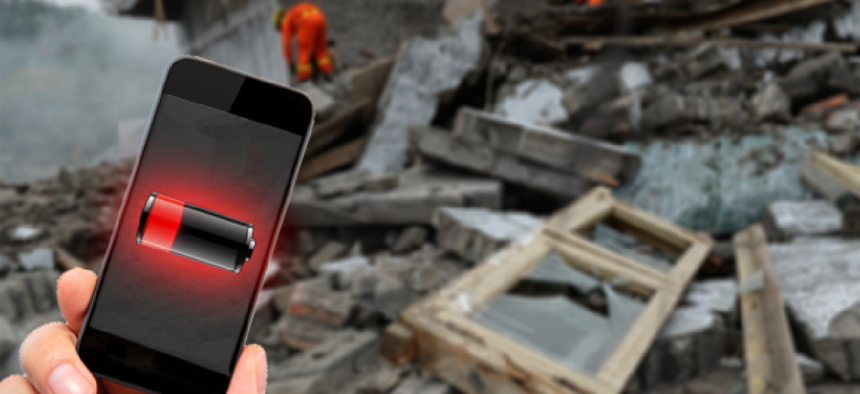Making smartphones work for us during disasters


Connecting state and local government leaders
Similar to a phone’s airplane mode, a 'disaster mode' would help Android devices conserve energy and share information that could improve planning for disaster assistance.
Can smartphones be used to detect and direct aid to at-risk individuals during a natural disaster?
Not yet. But if Geoffrey Challen and his colleagues at the University of Buffalo succeed in getting adoption of their Android-based smartphone disaster mode – being demonstrated this week at the National Institute of Standards and Technologies' SmartAmerica Challenge – smartphones will become a much greater part of disaster-response efforts.
According to Challen, an assistant professor of computer science and engineering, smartphones could also be used by those in a disaster zone to locate resources and help residents navigate to safety. To achieve such functionality, Challen's team is working in two primary areas.
First, they are working on smartphone energy-management strategies. "These devices are not really well-prepared for a disaster environment," Challen explained. "You can tell when you're at the edge of your carrier's 3G or mobile data range, because the phone battery is draining more quickly."
What is just an irritant during day-to-day use, however, becomes a major liability during a disaster. "Suddenly you're in an environment where it's very likely that there is damaged infrastructure, and there is a lot of competition for the available wireless resources," Challen said. "It's a double whammy. At the exact moment where you don't want the device to be performing power-hungry, desperate searches for network coverage, that's exactly what it's doing."
Challen's team is developing methods to conserve power, including shutting down unneeded applications and services on the phones.
"You'll be able to put your smartphone into a disaster mode similar to airplane mode," Challen said. The team is looking not only to shut down applications, but also to conserve power in other ways, such as using different colors.
"We have a student who has been doing quite a few experiments on reducing energy use by altering screen properties, reducing frame rates and using different color schemes," Challen said. "It turns out that different colors used in the display have different power-consumption levels. Some of the hot colors like green consume quite a bit of power."
The second major push by the team is to develop applications that can collect and deliver relevant data. Initially, the primary focus is on integrating the PEOPLES Resilience Framework, a project led by University of Buffalo geographer Chris Renschler that analyzes data about individuals' movements, degree of mobility, connectivity to social networks and other personal factors to measure vulnerability.
"During the two days a week before something like Hurricane Sandy, would people be willing to give up a little bit of their privacy and cede some of their smartphone data to the organizers of a response to try to build a model to figure out how to allocate resources, and to build transient communities to try and help each other survive?" asks Challen asks.
Data fed through the PEOPLES Resilience Network could be used to direct responders to stranded individuals and to help residents navigate to safe locations.
There are, Challen acknowledged, some major hurdles to implementing a smartphone disaster mode. One major step will be getting cooperation from those who control the operating systems. "This is not the type of change that you'd be able to deploy as an app," Challen said. "This requires fundamental changes in the built-in software of the smartphone."
In fact, that's why the team is initially developing for Android. "The fact that Google publishes the source code for Android has made this entire project possible," Challen said. "We couldn't even make these kinds of modifications to an iPhone or Windows phone."
An effective smartphone disaster mode may also require the cooperation of service providers, who tend to load phones with applications that can't be uninstalled by users and that automatically update. "One of the things we do in disaster mode right now – and it's not really that challenging to do on Android – is we just shut down a lot of the stuff that is generally running in background," Challen said. "You don't need to update to the latest version of Shazam during a disaster."
NEXT STORY: Robots stand guard on bridges and ports




